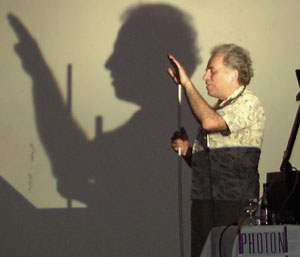
Almost a century after Einstein introduced the idea of a quantum of light, the photon (its name introduced only in 1926) continues to be a rich field of physics. Photonphoton and photonproton interactions are prolific testing grounds for quantum chromodynamics (QCD) the field theory of quarks and gluons as well as the more “classical” quantum electrodynamics (QED).
Experimentalists, mainly from CERN’s LEP electronpositron collider and DESY’s HERA electronproton collider, discussed their newest results with theorists at the International Conference on the Structure and Interactions of the Photon (PHOTON 99), which was held recently in Freiburg, Germany.
At close quarters the photon looks as though it contains quarks and gluons as well as electromagnetic particles. The HERA and LEP experiments have reached a new stage of precision in the measurement of photon structure. Claudia Glasman (Madrid) pointed out that the new data pose a challenge to the theorists.
The scattering of two virtual photons at LEP provides a pure test of a certain (BFKL) QCD regime. However, there are large discrepancies between the theory and the data, possibly owing to higher-order effects.
Photon-photon interactions are now studied from the electron-volt up to the giga-electron-volt range. Denis Bernard (Ecole Polytechnique) presented a search for elastic photonphoton scattering a reaction that has never been observed. The best limit using lasers is still 18 orders of magnitude greater than the value predicted by QED.
At high energies the physics potential of a “Compton Collider” as part of the next (electronpositron) Linear Collider project was discussed by David Miller (UCL). In a Compton Collider (originally suggested by Telnov, Serbo, Ginzburg and Kotkin from Novosibirsk three of them were at PHOTON 99), high-energy photons are produced by scattering laser photons off electron beams.
One of the most exciting possibilities is to produce Higgs particles directly from the scattering of pairs of such high-energy photons a powerful way of determining fundamental Higgs properties.
Kai Hencken (Basel) pointed out that Brookhaven’s RHIC will also be a rich source of photons. The first results are expected in time for PHOTON 2000, which will be held in Lancaster (UK).
The proceedings of PHOTON 99 will be published by Nuclear Physics B.







